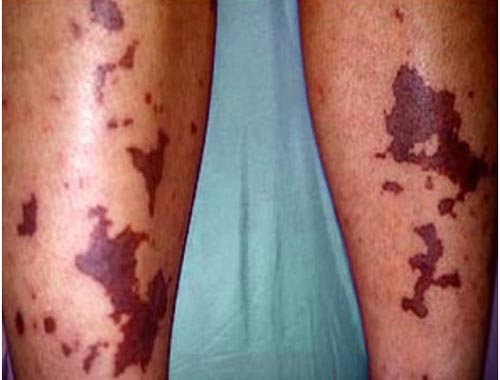DIC (Disseminated intravascular coagulation)
Disseminated intravascular coagulation (DIC) is an abnormal activation of coagulation (blood clotting) mechanisms that can develop as the result of a variety of diseases and conditions. It is associated with inappropriate blood clotting (thrombosis) inside blood vessels throughout the body. Because the clotting consumes coagulation proteins and platelets and small clots disrupt normal blood flow to organs (such as the kidneys), excessive bleeding and organ failure occur, ranging in severity from moderate to life-threatening. Typically, when a person has an injury to a blood vessel and bleeding occurs, the body stops the bleeding by initiating a process called hemostasis. First, platelets adhere to the injury site and clump together, forming a loose plug. Then coagulation factors are sequentially activated (see coagulation cascade) to produce a net of fibrin threads that weave through the platelet plug and form a stable clot. The clot stays in place until the injury is healed, then other factors break the clot down (fibrinolysis) and remove it. This clotting process is tightly regulated. Feedback mechanisms accelerate the clotting process, then slow it down, and control the volume of clot produced. Signs and symptoms of DIC depend upon the underlying condition and on the severity and the extent of DIC. Some examples include: Fever; Low blood pressure; Blood and-or protein in the urine; Some signs and symptoms of DIC are associated with bleeding and-or inappropriate clotting. Significant bleeding usually occurs from at least three different sites. Blood in the stool or urine from internal bleeding; Headaches and other symptoms associated with bleeding in the brain; Bruising and the formation of small red dots on the skin (petechiae); Bleeding at the site of wounds, surgical sites, intravenous (IV) needle or catheter sites; Mucosal bleeding - from the nose, gums, mouth, etc. Symptoms depend on the location of blood clots and may include: Symptoms associated with organ dysfunction caused by blood clots blocking blood flow and oxygen to organs such as the liver and kidney, leading to liver and kidney failure; Blackening of the skin caused by blockage from blood clots and poor blood flow to the skin; Chest pain, coughing up blood, and-or difficulty breathing caused by blood clots in the lungs; Chest pain and-or a heart attack caused by clotting in the heart; Headaches and other symptoms associated with a stroke, caused by clotting in the brain.
